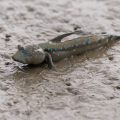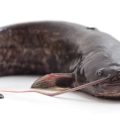According to one study, they can swim up to 100 miles in one day. If you see a catfish swimming around in your local lake or river, watch out for it – it might be traveling far away from where you first saw it.
Catfish are commonly found in the American sub-continent. Most catfish live in slow-moving rivers and streams, but some species can travel 100 miles from their natural habitats. The channel catfish is a large freshwater fish that can live in waters with varying salinity. This article discusses their habitat requirements, details their nomadic tendencies, and gives a timeline for when they might reach our rivers.

Fixing Catfishing Locations Determining Catfish Travel Range
Catfish typically live in slow-moving rivers and streams but have been known to travel up to 100 miles daily. They eat small fish and invertebrates and can grow more than six feet long. In the wild, they may travel up to 25-100 miles a day, but in captivity, they are often kept in much smaller tanks and may only travel a few yards.
How far can catfish travel in a day is a question that many anglers ask themselves when they’re trying to determine where to spot some big fish. While it’s difficult to give an exact answer, there are some general guidelines you can use to help estimate how far your quarry could be traveling.
You first need to know how fast a catfish can swim. On average, a channel catfish can swim at around four mph. Figure on them staying within a mile or two of the spots where you hooked them, barring any unforeseen circumstances, like major wind shifts.
Let’s take into account the fish’s natural habitat. Catfish prefer slow-moving rivers and streams with cover and hiding areas. This means that most of the time, catfish swim away from your location. If you’re fishing from shore or an anchored boat, don’t expect the fish to come trotting.
Catfishing Techniques on Their Travel Range
If you want to catch catfish regularly, you need to learn some good catfishing techniques. Here are some tips that can help you get the most out of your fishing trips:
- Choose a good spot: When catfishing, it’s important to choose a good spot. If the water is clear and there are plenty of fish in the area, chances are you’ll be successful.
- Simplify your gear: When catfishing, it’s important to keep things as simple as possible. Focus on using just a few pieces of gear to do the job well like a good rod for catfish. This way, you won’t waste time figuring out what’s wrong with your equipment.
- Use bait wisely: One of the best ways to catch catfish is by using bait. However, it’s important to use them wisely. You don’t want to use baits that are too heavy or that will scare the fish.
How they find food, avoid predators, and breeding behavior.
- Most catfish live in rivers and streams, but some species live in lakes and ponds. Most of the time, catfish eat things like insects, worms, and other small animals they find in the water. They can also eat fish if they can catch them, like minnows.
- Some catfish species can go far away from their home river or stream to find food. For example, the channel catfish can travel 100 miles from its home river. Some other species of catfish, like the flathead catfish, only travel a few miles from their home river or stream.
- Some species of catfish can avoid predators by swimming in schools. Other species hide under rocks or in places where they can’t be seen. Some catfish have barbels on their noses to taste the things they eat. This is how they know if they want to eat.
- Some females of some species of catfish will lay eggs in the water near a dam or a waterfall. When the eggs hatch, the young fish will swim back upstream to where the female fish was living before, she laid her eggs.
Migration of Catfish
The migration of catfish is a fascinating and often unnoticed event. Catfish live in rivers and streams but migrate vast distances to find new habitats. These fish migrate to find new sources of food and to avoid predators. Overall, catfish migration tends to be quite slow, with most fish traveling only a few kilometers daily. However, there are a few rare cases where catfish have been documented traveling up to 100 kilometers in a single day.
Despite their long-life spans, catfish are thought to migrate only a few miles from their birthplace during their lifetime. Some factors influencing migration include environmental changes, food availability, and competition from other fish species.
Impacts on Human Fisheries and Lands that Fish inhabit
The article discusses how far catfish travel in a day, which impacts human fisheries and the lands that fish inhabit. The geographical impact of catfish on human fisheries and the lands that fish inhabit is significant. Catfish are abundant in many parts of the United States, and their population growth has increased their demand for food and commercial uses. Their abundance also impacts other aquatic species, as the competition for food and habitat increases the risk of extinction for these other species.
Conclusion
Their travel range depends on voracious appetites and a penchant for moving around frequently in search of food. Even though they may not be the most desirable fish swimming around your local pond or lake, it’s worth noting that they’re quite capable of traveling long distances quickly.
Thank you for reading our article on how far catfish travel in a day. Now that you know that these fish can cover a considerable amount of territory in just a short period, check out our other articles to learn more about this species.











